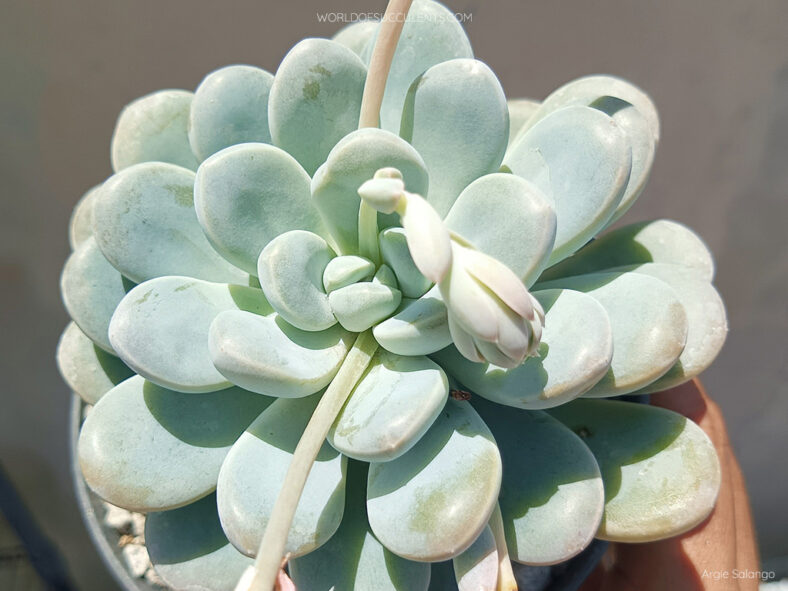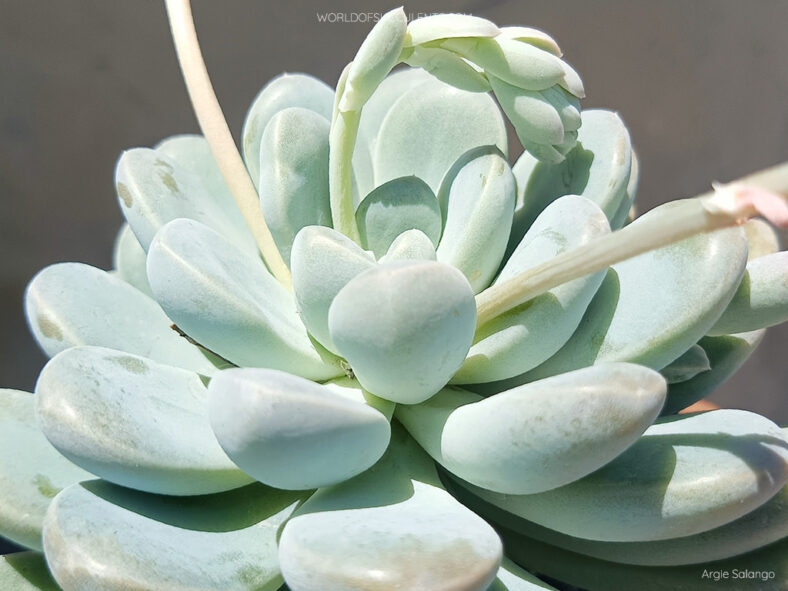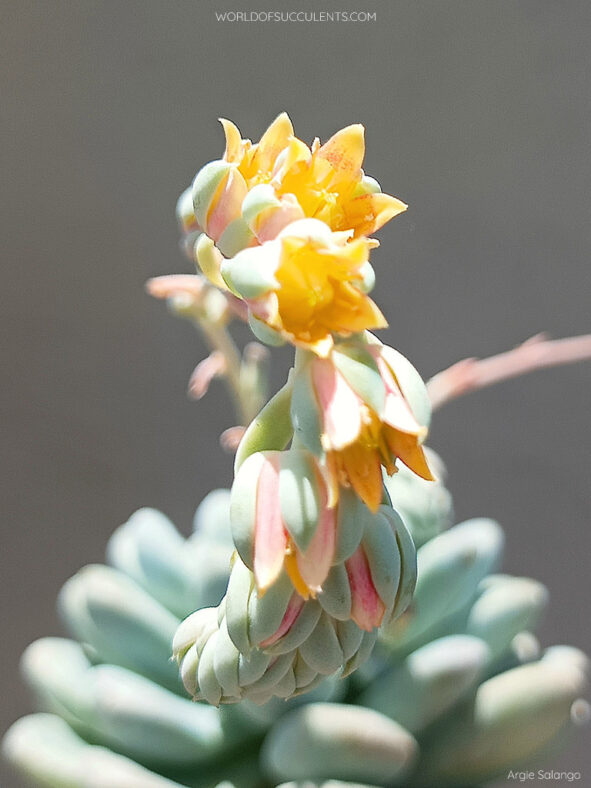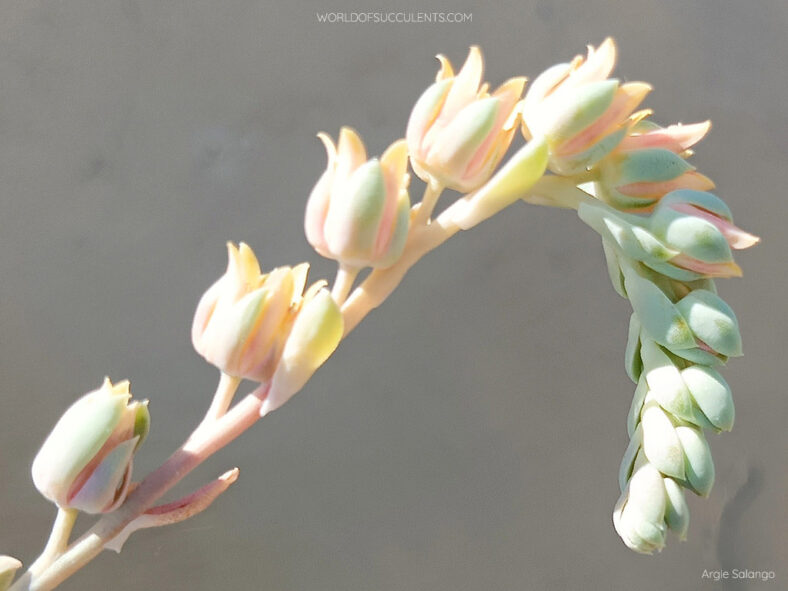×Pachyveria 'Muelleri' is a hybrid that results from a cross between Pachyphytum oviferum and Echeveria derenbergii. It was described by Herman Jacobsen in A Handbook of Succulent Plants (1960). Pachyphytum 'Friede', described by Joop van Keppel in Succulenta No. 10 (1974), is actually the same plant.
Scientific Name
×Pachyveria 'Muelleri'
Synonym(s)
×Pachyveria 'Mülleri'
Scientific Classification
Family: Crassulaceae
Subfamily: Sempervivoideae
Tribe: Sedeae
Nothogenus: ×Pachyveria
Origin
×Pachyveria 'Muelleri' is a hybrid created by W. Müller in the Garden of Pfitzer in Stuttgart, Germany.
Description
×Pachyveria 'Muelleri' is a delightful succulent that forms dense rosettes of thick, blue-green leaves with a slightly frosted appearance. The rosettes may be stemless or have a short stem, typically reaching a diameter of about 4 inches (10 cm). As the rosettes mature, they produce offsets at the base, forming a dense clump. The leaves are spoon-shaped and have a flat to somewhat concave upper surface and very convex lower surface, tapering to a short, sharp point. They can measure up to up to 2 inches (5 cm) long, 0.8 inches (2 cm) wide, and 0.4 inches (1 cm) thick.
In late winter and spring, ×Pachyveria 'Muelleri' produces bell-shaped flowers with pink petals that fade to yellowish near the top and are yellow on the inside. The flowers can measure up to 0.4 inches (1 cm) long and appear in arching clusters on stalks that can grow up to 8 inches (20 cm) long. The sepals are unequal, shorter than the petals, green, and may also have a slightly frosted appearance as the leaves.

How to Grow and Care for ×Pachyveria 'Muelleri'
Light: ×Pachyveria 'Muelleri' requires full sun to partial shade for optimal growth. Therefore, place it near the brightest window in your home. In addition, if you plan to move the plant outside in spring, do it gradually and avoid exposure to intense afternoon sun.
Soil: Having soil that drains quickly is most important for growing a healthy succulent. While many growers prefer to create their own soil mix, a commercial potting mix specifically formulated for succulents will work fine.
Temperature: High temperatures are not a problem as long as there is plenty of fresh air, but ×Pachyveria 'Muelleri' is a tender succulent and must be brought indoors if there is a risk of freezing temperatures. It grows best in USDA Plant Hardiness Zones 10a to 11b, with average minimum winter temperatures ranging from 30 to 50 °F (-1.1 to 10 °C).
Watering: This plant prefers the "soak and dry" method during the growing season. Water deeply and then let the soil completely dry out before watering again. Water sparingly during the winter, only enough to keep the plant from shriveling. Above all, if you have a saucer under the pot, do not forget to empty the excess water.
Fertilizing: Although it can grow well without fertilizer, ×Pachyveria 'Muelleri' may benefit from extra nutrients. Feed only during the growing season and use a water-soluble fertilizer diluted to half the recommended strength.
Repotting: If growing this plant in a container, repot as needed in spring or early summer, but ensure the soil is dry before you start. Also, always use a container with drainage holes.
Propagation: ×Pachyveria 'Muelleri' is easily propagated by stem cuttings, leaves, and offsets. Therefore, spring is the best time to take cuttings or separate offsets.
Learn more at How to Grow and Care for Echeveria.
Toxicity of ×Pachyveria 'Muelleri'
×Pachyveria 'Muelleri' has no toxic effects reported. However, although it is safe for growing around children and pets, it is not advisable to eat it.
Links
- Back to nothogenus ×Pachyveria
- Succupedia: Browse succulents by Scientific Name, Common Name, Genus, Family, USDA Hardiness Zone, Origin, or cacti by Genus
Photo Gallery
Click on a photo to see a larger version.


